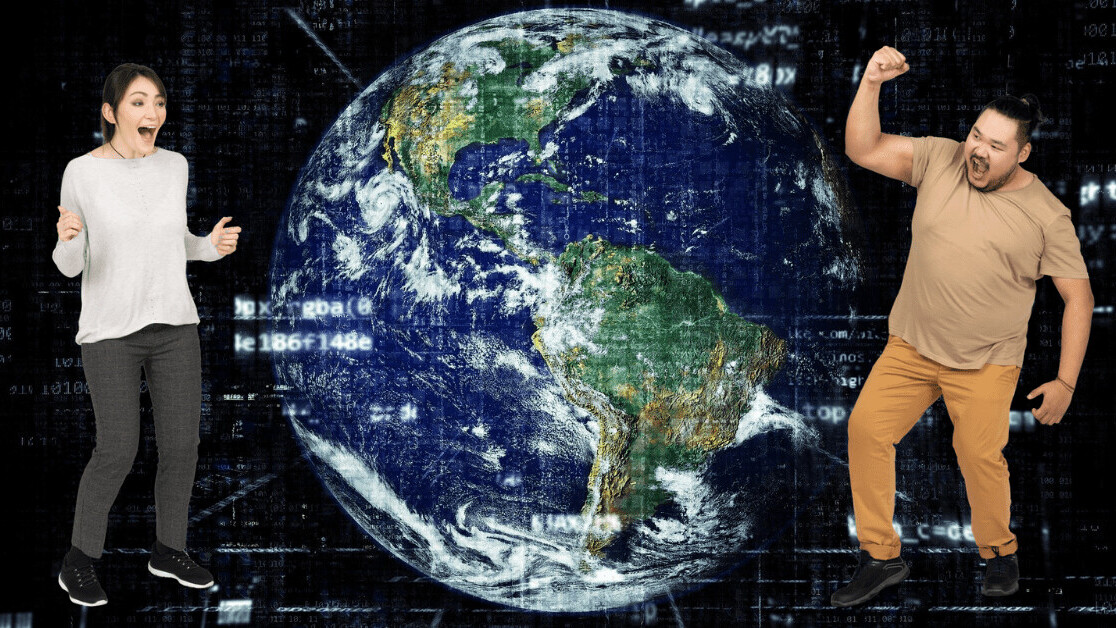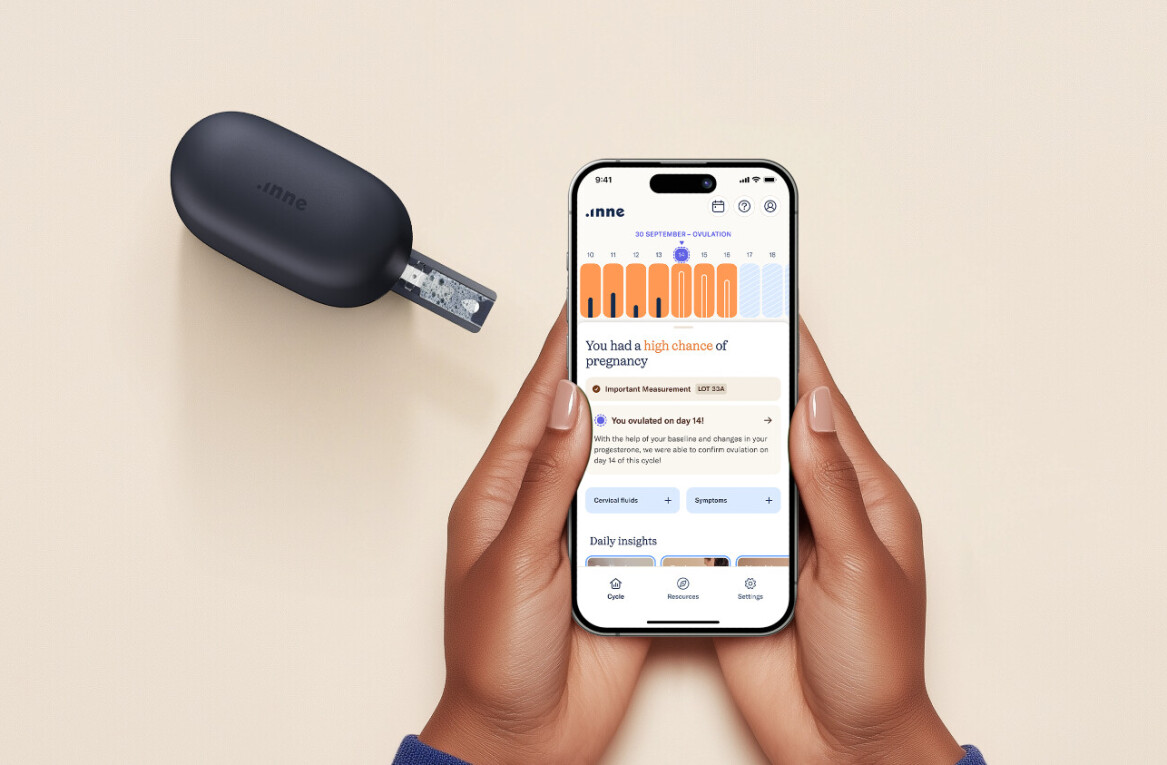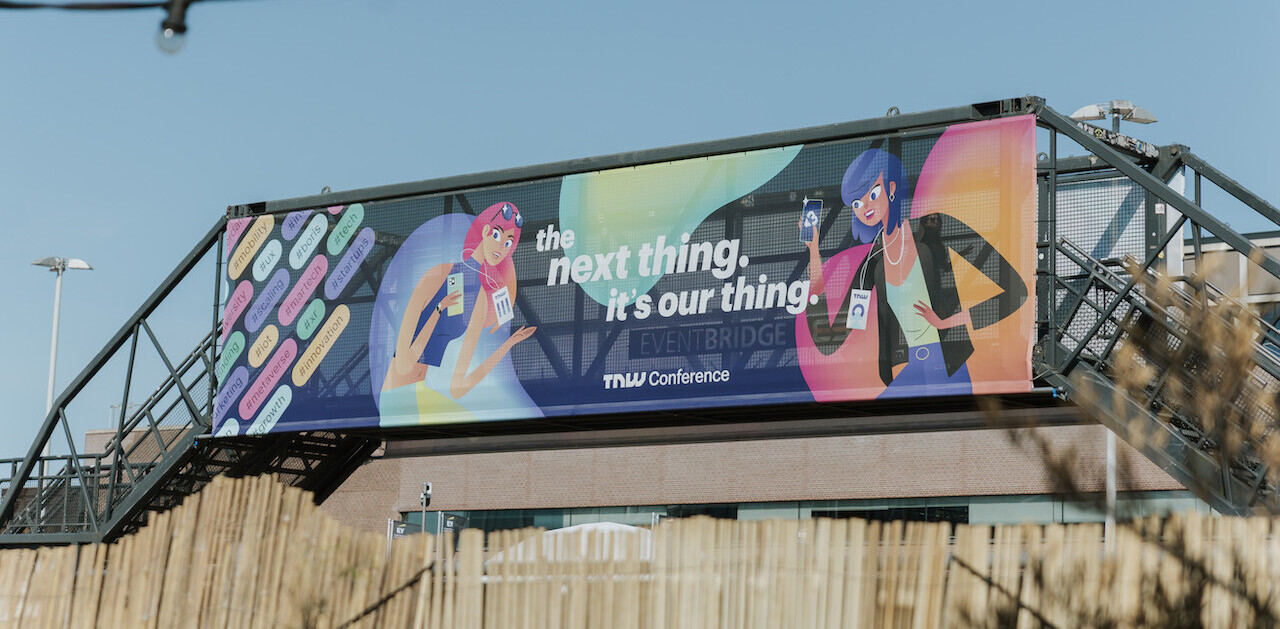Data science may not have the sexiest ring to it, but these dynamic data science scale-ups are using their expertise to help fight one of the most important and pressing challenges facing the planet: climate change.
This year the Techleap.nl’s Rise Programme — aimed at helping Dutch scale-ups reach their full potential — decided to shine the spotlight on 10 forward-thinking companies that are looking to make an impact on a global scale.
From sensors and satellites to solar and sustainability, we caught up with four scale-ups from their second batch to find out how they believe the power of data can be harnessed to flatten the climate curve.
PHYSEE: Give your building its own SmartSkin
It all started in the desert. In 2014 Ferdinand Grapperhaus and his cofounder Willem Kesteloo took a trip to Burning Man, a last adventure before they each started lucrative careers in the corporate world. Being far away from the opinions of family and friends gave them time to really consider what they wanted for their futures.
When they came back, they turned down their high paying jobs for the chance to build a company around a spin-off project they started at TU Delft. Thus PHYSEE was born, a company focused on bringing smart sustainability solutions to the real estate industry. As Grapperhaus explained,
Buildings are one of the biggest pieces in the puzzle of the climate change problem. Globally, buildings are responsible for 40% of the total energy consumption and this craves for a complete redesign.
Their unconventional approach was to start by upgrading a 5,000-year-old building material: glass. As physicists studying at TU Delft, Grapperhaus and Kesteloo developed glass coatings with solar cells that could convert sunlight into electricity.
We saw that the skin of a building currently doesn’t have any functionalities, whereas your skin or my skin senses if it’s too warm or too cold or when there’s wind. That way the mind and the body can react. We realized that, if we started integrating sensors with our solar technology, we could bring the skin of a building to life.
SmartSkin, as they called it, is a noninvasive transparent layer added to a building’s windows. While it can’t be seen, it’s continuously collecting data on things like: how to heat certain rooms more efficiently, where heat losses are occuring, whether there’s too much light coming in, and detecting differences in air quality. Then, just like our bodies,’ it responds by adjusting the shading or air controls accordingly.
They found that this approach actually helps to create a more comfortable environment for people in the building. For example, if you’re working by a window you never want direct sunlight in your eyes. Instead of having to get up and adjust the blinds, the SmartSkin will automatically adjust its tinting for you.
“When you bring your building’s skin to life, you get the smartest input to significantly reduce the energy consumption of the building,” Grapperhaus told TNW.
While a combination of legislation and the potential benefits of energy savings are helping to make real estate developers more energy conscious, PHYSEE ran into a few challenges along the way that helped them to innovate their business model.
They saw that project costs were getting too high for real estate developers to take on the full bill. This led them to develop a completely new business model essentially allowing them to go Dutch with their future tenants. While real estate developers pay for the initial hardware that goes into the building, it’s on tenants or future building owners to decide if they want to pay a service fee to PHYSEE to help them decrease their energy consumption.
And they don’t just focus on buildings.
Back in the lab they accidentally discovered another type of solar coating which, when applied to a greenhouse, can convert UV sunlight into visible light.
A tomato will not grow from UV light but every percentage of visible light that you add will equal an additional percentage of growth. With this coating we can increase the additional visible light by 7% meaning crops will grow 7% faster and growers will receive 7% more revenue. Considering the Sustainable Development Goals, this means that, with the same amount of land, we can grow more food using less energy resources. And this all comes down to simply using sunlight more efficiently.
So far PHYSEE has installed and sold 7,000 square meters of SmartSkin and, in 2021, the goal is to scale up this success. Joining the Rise Programme has given them great motivation and inspiration to keep going.
“We’re all swimming against the current and we’re all disrupting a system that seriously needs to be disrupted. I found that, checking in with each other on a weekly basis really reinforces you on the mission that you’re on and helps you to realize that you’re not alone,” Grapperhaus told TNW.
Sensorfact: Helping industrial SMEs cut energy consumption
To meet its ambitious green goals, in 2019 the European Commission called on member states to step up their game by committing to reduce energy consumption by at least 32.5% by 2030.
These binding targets have been translated directly into standards industrial companies will have to comply with in the coming years. The problem is, many, especially SMEs, don’t know where to start.
Having formerly run his own energy consultancy, Sensorfact’s founder, Pieter Broekema, quickly realized that industrial SMEs needed to save a lot of energy, but they didn’t have the data they needed to actually see where their energy flows and where their opportunities for potential savings lay.
The problem is, all companies can see on their energy bill is the number of kilowatt-hours consumed. “It’s more or less a black box for them,” Broekema said.
He browsed the market to find solutions that could help his clients but all of them were quite complicated and too expensive for SMEs to afford.
Imagine that by 2030 they need to save 32% on their energy bill. This is an immense task they’re facing. The biggest complaint is that a lot of energy advisors tell them ‘you need to install LEDs and solar panels’ but really the main portion of their energy bill comes from the manufacturing process. And, currently, not a lot of players give them advice on how to optimize this.”
To address this need, Broekema and his team developed a simple wireless system. They send clients a box of IoT sensors that can easily be clamped around the main electricity cables of a client’s machines. These sensors automatically begin processing data using Sensorfact’s algorithms, all without having to stop production.
Rather than a one-off list of recommendations, Sensorfact’s service works in two stages:
The first two to three months is a diagnosis phase during which the team collects data and pinpoints where a company could save on energy.
During the next phase, the team tracks how they actually perform against these savings opportunities and provides a weekly feedback report. As Broekema has seen, this continuous tracking and feedback really helps clients change their behaviors.
“Imagine a company’s production line isn’t running efficiently and we tell them, ‘you could save 20,000 euros by making certain changes.’” These savings will only materialize if they really commit to this change.
Sensorfact has calculated that, on average, their clients consume 10% less energy. Putting that into perspective, 10% less energy could be equivalent to saving thousands of euros every year, a benefit that could really help companies in the new economic climate we’ve found ourselves in this year.
Sensorfact’s current goal is to reach 300 B2B customers by the end of this year, and they seem to be on track. For 2021 their ambitions are set on product expansion. The team hopes to raise a series A funding round (which already seems to be in the works) to help them introduce a new sensor measuring gas consumption.
But Broekema believes the Dutch scale-up scene is in need of a boost. While there are a lot of resources for startups, funding for later-stage scale-ups is on the rise but still quite small when compared to other European countries. There are also very few programs focused on this level.
“We really believe that the Netherlands should continue focusing more on scale-ups and less on startups. We’re very happy with the Rise Programme and hopefully the Dutch scale-up community will be fully developed in the coming years.”
hello energy: Changing behaviors and mindsets
Hello energy co-founders Benno Schwarz and Kees van Alphen started out as consultants advising large real estate firms on how to go green. But what they were seeing was that a majority of the people within a company were, “not really feeling sustainability. It wasn’t tangible, it wasn’t understandable,” Schwarz explained.
At the same time, two of their clients were searching for ways to share their progress on sustainability with a broader audience: their employees, the c-level, and visitors to their buildings.
This triggered Schwarz and van Alphen to ask themselves: “What can we do with all the data we’re receiving from these buildings? And how can we make it simple enough that everyone can understand it and take action themselves?”
Realizing that large organizations needed a way to continuously keep sustainability top of mind, they created hello energy, a cloud solution that collects and visualizes a company’s energy and sustainability data.
Whether you’ve introduced new efforts to reduce CO₂ levels at your manufacturing facilities or you’ve installed new LED lighting, hello energy collects updates on these energy-saving initiatives in a visually appealing way that can be shared on mobile phones, laptops, or monitors throughout the building.
But their goal isn’t just to share data, they also want to use this information to motivate individuals in the building to take action. They do this using a few different methods:
- Data analytics & alerts: For example, ‘Last week you consumed 20% less energy than this week.’
- Easy tips: Small triggers and nudges that help change behaviors. This could be something like: ‘When you’re not in a room, turn off the light.’
- Education: Videos explaining how green technologies like solar panels and LED lighting work.
- Benchmark: A frame of reference, for example: ‘Your building consumes 20% more energy than similar office buildings in Rotterdam.’
And they’re planning on building this engagement aspect out even further. “Visualization is one aspect, but now we’re also integrating surveys and polls and triggering benchmarking opportunities. The goal, in the end, is to make sure people change their behaviors. So we believe that changing the mindset of everyone who enters a building, including individuals, management, and visitors, will create a huge impact,” Schwarz said.
And he’s seen some key trends taking place that are expected to drive hello energy’s growth even further:
First of all, large pension funds and banks are investing more in green real estate, so there’s an active push for organizations and real estate developers to make progress on sustainability. This means these actors need a way in which they can visualize and share their efforts with stakeholders.
Second, the tenant experience is becoming a key factor for real estate owners and a chance to have a dialogue on sustainability.
Third, collecting and taking full advantage of data is becoming a new goal, whether it’s meter data or people data.
And finally, due to Covid-19, sharing data on health and wellbeing is becoming more important than ever. This will be key in assuring a safe transition back to the office.
Sustainability is also becoming a key concern for employees. More and more, top talent is looking for companies that don’t just offer great salaries and interesting work, but are also committed to improving sustainability. hello energy’s clients, in particular, have seen that visualizing this can actually help to attract better talent.
Overstory: Fighting power outages and forest fires with planet intelligence
Three years ago data scientist Indra den Bakker and business strategist Anniek Schouten entered an online machine learning contest. Both wanting to use their talents to help fight climate change, they developed a system to detect deforestation in the Amazon by combining satellite imagery and AI.
This project, originally called 20tree.ai, later became Overstory – a Planet Intelligence
Platform with the power to monitor all natural resources on Earth in real-time.
As you can imagine, the possibilities that this technology can bring are endless but, for now, Overstory decided to focus on developing their product to help the electric utilities industry improve their vegetation management capabilities.
And just why is this so important to help prevent climate change?
With vast networks of power lines crisscrossing our forests, there are so many factors from vegetation growth to heavy winds to insect outbreaks that could cause branches to fall or grow into power lines. This can lead to massive power outages or even forest fires.
When electric utility companies don’t manage the vegetation around their power lines correctly the consequences can be deadly. For example, 1,500 forest fires that occurred across California over the last six years have been attributed to the Pacific Gas & Electric Co.
And these problems may only intensify.
As den Bakker explained, due to changing weather conditions, “Our forests are more and more under pressure. Bark beetles have more time to swarm because of the higher temperatures, we see an increasing number of extreme weather events, and the duration of the droughts are longer. More information is needed to improve decision making about our forests and trees.”
But, by harnessing the in-depth data that their technology can provide, Overstory is helping energy utility companies go beyond reaction and move towards better preventionary strategies.
By combining AI and satellite data we can create an up-to-date view of encroachment in and around power lines. By mapping the full grid, we help our customers to understand the current risks and help them prioritize maintenance. In addition, we extract tree-level information to help predict future risks. We do this by creating a base map of vegetation, including the height of the trees, the tree species, and the distance to assets. By monitoring vegetation over time, we also get information on tree health and growth rate which we use to predict future risks.
In 2021 den Bakker and his team plan to focus on scaling the company and increasing its positive impact on the planet. They’ve recently opened an office in the US with the aim to help more utility companies across the world keep their grids safe and our forests healthy. That’s why joining the Rise Programme at this juncture in their development has really been helpful.
As den Bakker explained, “We joined the Rise Programme because we wanted to learn from and together with other Dutch scaleups that are active in climate tech. It was very helpful to openly discuss the challenges we face. Building and scaling a startup is not easy. We closed our $2M Seed round during the summer and have doubled our team since then. Getting feedback from industry experts helped us to think about the next phase of Overstory.”
Bringing data to the climate change battle
Under the weight of the multitude of challenges we’ve faced this year, one positive outcome we’ve seen is that, according to all four startups, the sustainability movement hasn’t wavered. As Schwartz explained,
It’s been a very different year than planned. We didn’t know what was going to happen at the beginning of this crisis or if people were going to cut their sustainability budgets, but we’ve really seen that sustainability hasn’t been pushed to the side by our clients and prospects.
Of course we don’t know what the future will bring but we have a feeling that it’s connected. We’re now facing an invisible enemy – Covid-19 – but, if we don’t flatten the climate curve, we’ll have an even bigger invisible enemy: climate change. I hope that this will be the turning point.
With everything from our business operations to our marketing strategies being focused on data-driven insights, isn’t it time we applied this same approach to our biggest challenge yet?
Get the TNW newsletter
Get the most important tech news in your inbox each week.






